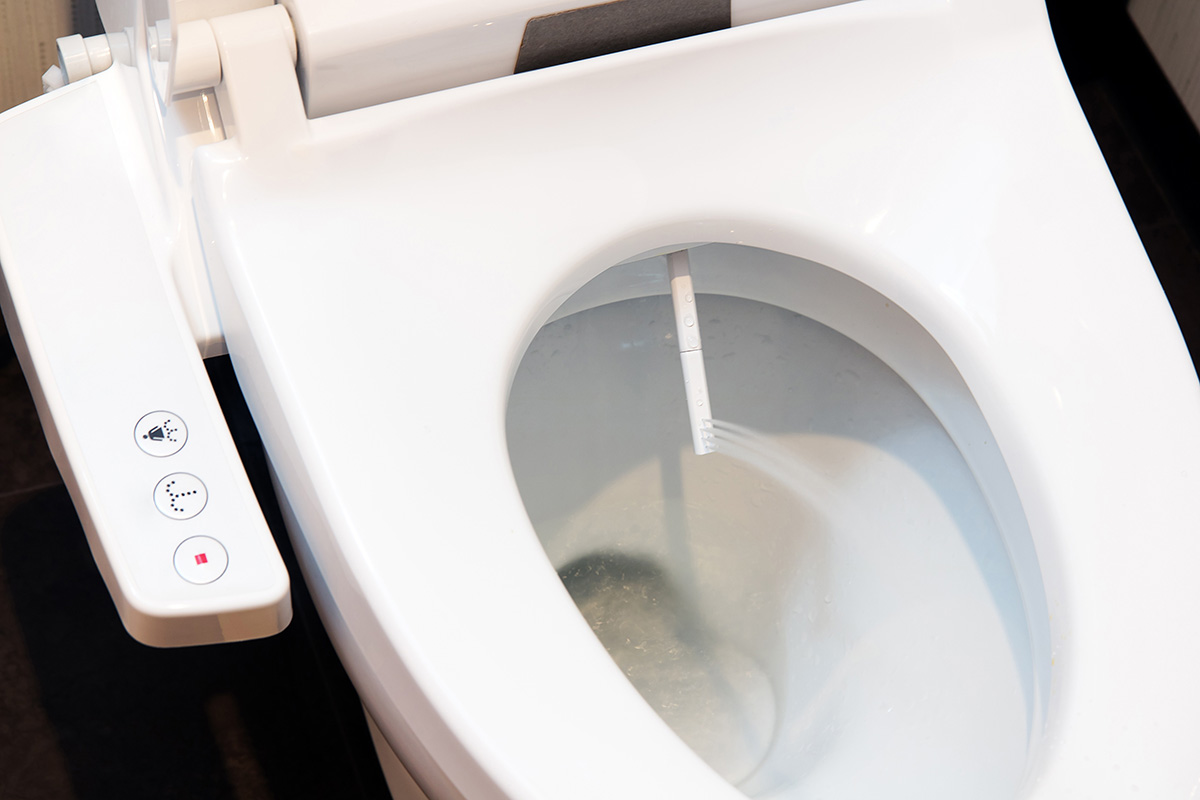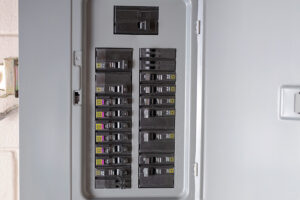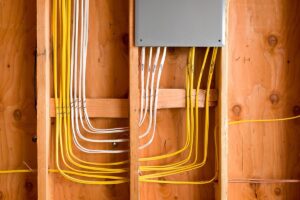While bidets are a standard appliance or feature in other countries around the world, it’s taken a while for them to catch on in the US. During the pandemic, as in other parts of the country, here in Vancouver, WA we saw a surge of interest as homeowners looked for ways to save on toilet paper. Besides, bidets are more hygenic, better for the environment, and provide a more comfortable bathroom experience.
However, when considering installing a bidet in your bathroom, you might encounter the challenge of bidet power requirements. After all, many homes lack an electrical outlet near the toilet area, making bidet installation seem daunting. We recommend speaking with a professional and licensed electrician before attempting to install any electrical equipment — especially those related to plumbing fixtures. Safety is always the highest priority when dealing with anything electrical!
Two Types of Bidets
There are two types of bidet units: bidet attachments (such as seats) and standalone bidets. Standalone bidets can be installed alongside the toilet or replace it entirely. Do bidets need electricity? Many bidets require no electrical connection at all, as the stream of pressurized water that does the washing in a bidet doesn’t need a power source. The pressure and the water can be delivered by your own water supply and your current toilet set-up. In some models, you can heat the water using your sink’s hot water connection.

For some bidets, whether they’re standalone or an attachment such as a seat, an electrical connection is required for extra features such as a heated seat. Thankfully, for homeowners in Southwest Washington and Northwest Oregon, Prairie Electric is the go-to electrical service provider to tackle this kind of project with expertise and precision.
Bidet Toilet Seat Electrical Needs & GFCI Outlet
The bidet seat unit is a popular choice due to its convenience and ease of installation. It fits directly onto your existing toilet seat, is positioned in or around the toilet bowl, and requires minimal power, or no power at all.
If they do require power, these units typically operate at standard household voltage levels (120V). As a result, they can be safely wired into the existing bathroom circuit without the need for additional wiring, new circuits, or new outlets installed.
However, it’s important to consider bidet outlet requirements, and the need for a GFCI outlet. Because we’re dealing with electricity and water, special accommodations should be taken when providing electricity to the bidet. Chances are the outlet near your bathroom sink is a GFCI. That outlet protects you from shocks and is commonly found in bathrooms. When a GFCI senses a ground fault, it shuts off the electrical flow.

If your bidet is close enough and the electrical or extension cord for your bidet is long enough, you can use the power supply next to your current sink area. Power cords are usually 4 feet long.
If you don’t like this set-up, you can power your bidet with an outlet close to the bidet itself. For this, you’ll need to have a professional electrician install an additional three-pronged GFCI outlet of at least 15 amps. Pros can install outlets like this quickly and efficiently — sometimes in no more than 30 minutes.
Prairie Electric’s skilled electricians are well-versed in handling such installations. We’ll ensure that the existing circuit can handle the added load and may recommend simple upgrades if necessary.
Full Appliance Unit Wiring
The full appliance bidet unit, on the other hand, is a comprehensive system that includes features like a built-in water heater, adjustable water pressure, and various cleansing options. More advanced models have seat adjustments, remote control access, spray-release deodorizers, and heated air dryers. All of these functions require higher power consumption, potentially exceeding the standard 120V. As a result, a new circuit must be installed, connecting all the way back to the electrical panel.
This type of bidet installation demands the expertise of experienced electricians, as it involves dealing with high-power electrical components. Do not attempt this type of installation on your own. Prairie Electric’s team possesses the necessary skills to undertake such projects with utmost care and professionalism. We’ll ensure that the new circuit is installed safely, adhering to all local electrical codes and regulations.

Why Choose Prairie Electric for Bidet Wiring?
Expertise and experience: Prairie Electric boasts a team of highly trained and experienced electricians who specialize in various electrical projects, including bidet wiring. Their expertise ensures that the installation process is seamless and efficient.
Safety first: Electrical projects, especially those involving new circuits, require strict adherence to safety protocols. Prairie Electric prioritizes safety at all times, giving homeowners peace of mind during and after the bidet installation.
Custom solutions: Every home is unique, and Prairie Electric recognizes that. We offer customized bidet wiring solutions based on your specific requirements and the existing electrical setup in your home.
Timely completion: Homeowners often want quick turnaround times for their projects. Prairie Electric’s efficient approach ensures that your bidet wiring project is completed on schedule without compromising quality.
Bidet wiring and installation may seem daunting at first, especially when it comes to the electrical wiring aspects. However, with Prairie Electric, homeowners can confidently take on this project knowing the details are in the hands of capable professionals.
Whether it’s a seat top unit or a full appliance bidet, Prairie Electric’s expertise, focus on safety, and commitment to timely completion make them the ideal electrical service provider for homeowners in the region.
Enhance your bathroom experience today with Prairie Electric and enjoy the benefits of a bidet in your home. Reach out today for a quote.


